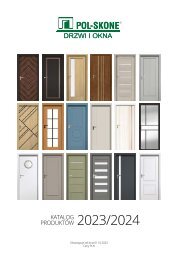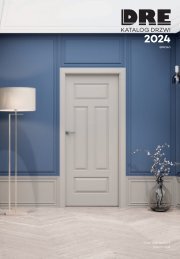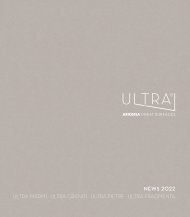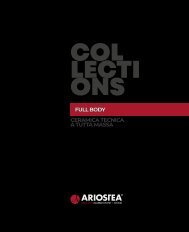katalog VilleroyBoch VIBOGARDEN
niemieckie płytki ceramiczne
niemieckie płytki ceramiczne
- No tags were found...
You also want an ePaper? Increase the reach of your titles
YUMPU automatically turns print PDFs into web optimized ePapers that Google loves.
TECHNICAL INFORMATION<br />
The vilbogarden tiles can be installed on various substrates and by means of various construction methods:<br />
• Installation as an unbonded construction<br />
• Installation as a bonded construction<br />
• Laying on pile foundations or mortar bags<br />
Important: Our installation guidelines constitute general recommendations only. The individual conditions which<br />
apply at the site concerned are always to be examined separately and cannot be included in these general recommendations.<br />
Due consideration must also be given to the laying materials employed in the individual case concerned.<br />
Please consult your specialist dealer and supplier on this. All the information provided here is non-binding.<br />
Additional Technical Contractual Terms for Path and Road Construction, basic principles<br />
for traffic areas away from road traffic areas<br />
A key factor which prompted the Forschungsgesellschaft Landschaftsentwicklung Landschaftsbau e.V. (FLL) to draw<br />
up its “Technical Contractual Terms for Path and Road Construction” (German: “ZTV Wegebau”) was the fact that<br />
under ATV DIN 18318 privately used areas in which relatively low loads apply, such as terraces and pathways, were<br />
subject to the same rules as applied to traffic areas in which high loads applied.<br />
As the applications in privately used areas generally involve lower loads and fall within the scope of the Technical<br />
Contractual Terms for Path and Road Construction, smaller dimensions are generally required here than are specified<br />
in ATV DIN 18318.<br />
The Technical Contractual Terms for Path and Road Construction were published in 2013. They are to be regarded<br />
as additional technical contractual terms tailored specifically to the prevailing requirements in the area of landscape<br />
gardening. The Technical Contractual Terms for Path and Road Construction represent the state of the art.<br />
They expressly state in their scopes of application that in case of doubt it is always to be checked whether the Technical<br />
Contractual Terms for Path and Road Construction or the technical contractual terms “ZTV Pflaster/RStO 12”<br />
are applicable. The Technical Contractual Terms for Path and Road Construction are not intended to improve existing<br />
rules and regulations, but rather provide recommendations for paving and tiling which are subject to low loads in<br />
the area of landscape gardening.<br />
For the purposes of specifying the thickness of the frost-resistant surfacing and the selection of building materials in<br />
accordance with the planned loads, the Technical Contractual Terms for Path and Road Construction drawn up by<br />
Forschungsgesellschaft Landschaftsentwicklung Landschaftsbau e.V. (FLL) distinguish between 3 usage categories.<br />
Usage category N1*<br />
This category covers paving suitable for foot traffic which is located away from road traffic areas and which cannot be<br />
driven on by vehicles (e.g. private terraces for hotels, sports and wellness areas, garden paths, other seating areas)<br />
Usage category N2*<br />
Paving suitable for vehicular traffic up to a permissible gross vehicle weight of 3.5 t away from road traffic areas (e.g.<br />
garage driveways, car parking spaces)<br />
Usage category N3*<br />
Paving suitable for vehicles up to 3.5 t, also suitable for occasional use by vehicles with a permissible gross weight of<br />
up to 20 t with wheel loads of under 5 t away from road traffic areas (e.g. care and maintenance ways, escape routes,<br />
fire brigade, garage and building access ways)<br />
*Source: Technical Contractual Terms for Path and Road Construction (“ZTV Wegebau”)<br />
36

















